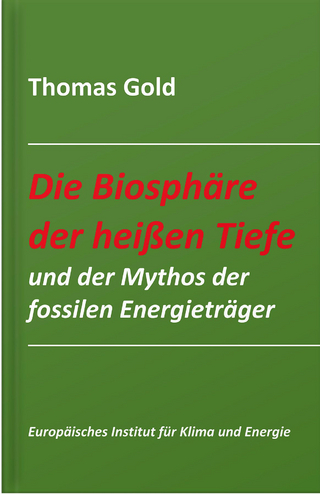
Strategies for Bioremediation of Organic and Inorganic Pollutants
CRC Press (Verlag)
978-1-138-62637-9 (ISBN)
Increased awareness surrounding environmental protection has prompted the development of more ecofriendly technologies. This book provides useful information on technologies based upon the use of biological agents for environmental clean-up, including bacteria, yeast, fungi, algae, and plants. Some chapters refer to the direct application of products derived from plants and microorganisms for designing strategies of environmental remediation. The combination of strategies helps in efficient removal of pollutants generated from anthropogenic activities with minimal environmental impact. This book is meant for professionals involved in environmental technology and waste management.
Dr. Maria Soledad Fuentes obtained her PhD in Biological Sciences from the National University of Tucumán. Dr. Fuentes is an Assistant Researcher of National Council of Scientific and Technical Research (CONICET). Dr. Verónica Leticia Colin obtained her PhD in Biochemistry from the National University of Tucumán. Dr. Colin is an Assistant Researcher of National Council of Scientific and Technical Research (CONICET). Dr. Juliana Maria Saez obtained her PhD in Biochemistry from the National University of Tucumán. Dr. Saez is a postdoctoral fellow with the National Council of Scientific and Technical Research (CONICET).
Agro-industrial Wastewaters Bioremediation by Ligninolytic Macrofungi. Bioremediation of Lignocellulosic Waste Coupled to Production of Bioethanol. Recovery of Sugarcane Vinasse by Microbial Pathways: An Integral Approach. Use of Immobilized Biomass as Low-Cost Technology for Bioremediation of PAHs Contaminated Sites. Biosorption of Dyes by Brown Algae. Strategies for Biodegradation and Bioremediation of Pesticides in the Environment. Pesticide Bioremediation: An Approach for Environmental Cleanup Using Microbial Consortia. Mycoremediation: Fungal Mediated Processes for the Elimination of Organic Pollutants. Pesticides in the Environment: Biobed Systems as an Innovative Biotechnological Tool to Minimize Pollution. Hexachlorocyclohexane: Sources, Harmful Effects and Promising Bacteria for its Bioremediation. Actinobacteria as bio-tools for removing and degrading α-, β- and γ- hexachlorocyclohexane. Mining and Mine Tailings: Characterization, Impacts, Ecology and Bioremediation Strategies. Phytomanagement of Metal-Rich and Contaminated Soils: Implicated Factors and Strategies for its Improvement. Bioremediation of Heavy Metals by Cells or Metabolites Microbial Immobilized. Hexavalent Chromium Removal Related to Scale-up Studies. Contribution of Genomic and Proteomic Studies toward Understanding Hexavalent Chromium Stress Resistance. Effects of Environmental Factors on Bioremediation of Co-Contaminated Soils Using a Multiresistant Bacterium.
| Erscheinungsdatum | 29.03.2018 |
|---|---|
| Zusatzinfo | 26 Tables, black and white; 3 Illustrations, color; 24 Illustrations, black and white |
| Verlagsort | London |
| Sprache | englisch |
| Maße | 178 x 254 mm |
| Gewicht | 816 g |
| Themenwelt | Naturwissenschaften ► Biologie ► Biochemie |
| Naturwissenschaften ► Biologie ► Genetik / Molekularbiologie | |
| Technik ► Umwelttechnik / Biotechnologie | |
| ISBN-10 | 1-138-62637-6 / 1138626376 |
| ISBN-13 | 978-1-138-62637-9 / 9781138626379 |
| Zustand | Neuware |
| Informationen gemäß Produktsicherheitsverordnung (GPSR) | |
| Haben Sie eine Frage zum Produkt? |
aus dem Bereich


